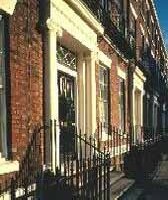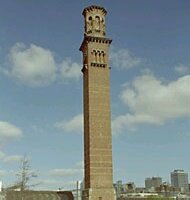Conservation areas advice


Conservation areas are areas of special architectural or historic interest, the character or appearance of which it is desirable to preserve or enhance. Local authorities are required to review which parts of their area should be so designated. Conservation area status gives broader protection than listing individual buildings: all the features, listed or otherwise, within the area, are recognised as part of its character and contribute to its appearance. Local authorities have a duty to ‘preserve and enhance’ conservation areas.
Conservation areas vary greatly in their nature and character. They include centres of historic towns and cities; fishing and mining villages; 19th- and 20th-century suburbs; model housing estates; country houses set in their historic parks, special farmed landscapes, and historic transport links and their environs, such as stretches of canal and railway lines.
The special character of these areas does not come from the quality of their buildings alone. The historic layout of roads, paths and boundaries; characteristic building and paving materials; a particular 'mix' of building uses; public and private spaces, such as gardens, parks and greens; and trees and street furniture, which contribute to particular views - all these and more make up the familiar local scene of a conservation area.
The first conservation areas were created in 1967, and there are now over 9,500 conservation areas in England. Conservation areas are designated under what is now s69 of the Planning (Listed Buildings and Conservation Areas) Act 1990.
Who designates them?
Though this is a ‘national designation’, local authorities have the power to designate conservation areas in any area of 'special architectural or historic interest'. This 'specialness' is judged against local and regional criteria, rather than national importance as is the case with listing.
English Heritage can designate conservation areas in London, where it has to consult the relevant London Borough Council and obtain the consent of the Secretary of State for Culture Media and Sport. The Secretary of State can also designate in exceptional circumstances - usually where the area is of more than local interest.
Within a conservation area the local authority has extra controls over:
- demolition
- minor developments
- the protection of trees
How is English Heritage Involved?
The role of English Heritage is to help local authorities use their powers and resources to preserve or enhance the character and appearance of their conservation areas.
Advice to local authorities
We give national advice on how local authorities should identify, designate and manage conservation areas. Our aim is to help local authorities ensure that conservation areas are set up wherever there are districts worthy of designation.
Local authorities have to notify English Heritage of applications for major developments proposed in any conservation area countrywide. This applies to developments of over 1,000 square metres. Developments by the local authority itself have to be referred to the Secretary of State for Communities and Local Government and English Heritage's advice will be sought as appropriate.
Local Authorities, Area Partnership Funding
Local authorities can apply for funding under our 'Partnership Schemes in Conservation Areas' scheme. The Heritage Lottery Fund also have a partnership programme called Townscape Heritage Initiative.
Partnership Schemes are run on a day-to-day basis by Local Authorities and are designed to target funding for the preservation and enhancement of conservation areas. They are based on a partnership between English Heritage, the Local Authority and other funding bodies and are designed to ensure the long term sustainable future of conservation areas, in particular through supporting heritage based regeneration initiatives.
Contact your English Heritage regional office for an application pack and to discuss whether your proposals for a partnership scheme qualify for funding and meet our priorities for your region.
Conservation Areas at Risk
From the summer of 2009, as part of the annual Heritage at Risk report, English Heritage will be including an assessment of the state of England’s 9,500 conservation areas. This is based on a survey by local planning authorities of the state of their conservation areas, with the baseline survey compiled from questionnaires filed by local authorities in the autumn of 2008.
We want to use the information on the state of conservation areas to target our partnership grant schemes on those areas that would most benefit from a building repair and public realm improvement grant scheme. We also hope to identify what the threats to conservation areas are, and if necessary assemble the evidence to go to Government to ask for changes to planning procedures to reduce the impact of these threats.
Management of Conservation Areas
Character assessment
The designation of a conservation area is not an end in itself. Local authorities have a duty to ‘preserve and enhance them (s71 of the Planning (Listed Buildings and Conservation Areas) Act 1990), and need to develop policies which clearly identify what features of the area should be preserved or enhanced, and set out how this can be done. Clear assessment and definition of an area's interest and the action needed to protect it, help to generate awareness and encourage local property owners to take the right sort of action for themselves. Character appraisals will also identify areas where enhancement through development may be desirable.
Enhancement
English Heritage advises local authorities to consult as widely as possible - not only with local residents and amenity societies but also with chambers of commerce, public utilities and the highway authority - over any proposals for a conservation area. The most effective consultation is one that starts at the beginning of the process rather than with a worked up proposal near the end!
Some of the means by which local authorities can enhance the appearance of conservation areas are:
- preparing special development briefs for sites they identify as detracting from the character or appearance of the area;
- ensuring that new buildings harmonize with or complement their neighbours in scale, style and use of materials;
- making environmental improvements, for example by reinstating historic paving materials, sympathetic landscaping and planting, or removing unsightly elements such as hoardings;
- integrating road signs and markings as far as possible with the character of the street;
- controlling the position and design of advertisements and shop signs;
- ensuring that traffic safety and control measures harmonize with the landscape;
- making grants available for the repair of buildings.
Management plans
Building conservation area policies into the statutory development plan, the Local Development Framework and its supporting Supplementary Planning Documents, is the best means of integrating conservation policies with wider policies for the area, such as shopping and traffic management. The most important policy is the presumption against the loss of elements which have been identified in the character assessment as making a positive contribution to the special interest for which the area was designated. Local Planning Authorities may choose to have a Supplementary Planning Document on their conservation areas requiring each to have an up-to-date Character Appraisal and management plan.
Once policies for a particular area have been agreed, local residents and businesses should be made fully aware of why the area has been designated and how they can protect its character and appearance. Local Authorities should do this with the conservation area appraisal and draft management plan.
Publications
Guidance on the management of Conservation Areas (English Heritage, August 2005 text published online and February 2006 printed, illustrated document released) identifies the key aspects of good practice that need to be taken into account by local authorities in managing their conservation areas, whilst recognising that resources are limited and have to be prioritised.
It aims to relate the designation and management of conservation areas to the principles of conservation management planning for historic assets, outlines how the management of conservation areas relates to the new development plans system and provides references to other relevant information. This document replaces Conservation Area Practice (English Heritage, 1995).
Guidance on Conservation Area Appraisals (English Heritage, August 2005 text published online and Febraury 2006 printed, illustrated document released) offers advice to those undertaking, or commissioning, conservation area appraisals. It complements and should be read in conjunction with the companion publication Guidance on the management of conservation areas. This document replaces Conservation Area Appraisals (English Heritage, 1997). Both documents have been produced with the assistance of ODPM and DCMS.
Planning and the Historic Environment. , Department of the Environment/Department of National Heritage, 1994.
Useful addresses
For details of local conservation areas and advice on whether a Partnership Scheme in Conservation Areas (PSiCA) or Townscapes Heritage Initiative (THI) is running in your area, contact your local authority planning department.
The English Historic Towns Forum publishes many useful publications. Check their website for further details.
The Civic Trust also publishes useful documents, especially for local groups/societies wishing to improve their areas.
Research
Measuring change in conservation areas: A research report.
English Heritage commissioned ‘The Conservation Studio’ to build on a pilot project they had undertaken which examined change in one conservation area in west London. The aim of the research was to establish the extent to which systematic information might be gathered and how a methodology for measuring change in conservation areas could be developed.
Measuring Change in Conservation Areas part 1 (431KB)
Measuring Change in Conservation Areas part 2 (277KB)
Measuring Change in Conservation Areas Part 3 (3,772 KB)
What's New?
-
Welcome to the HER21 page. This page offers access to the full suite of HER21 project reports.
-
Please help us to improve our website by completing a short survey and you could win a book of historic photographs
